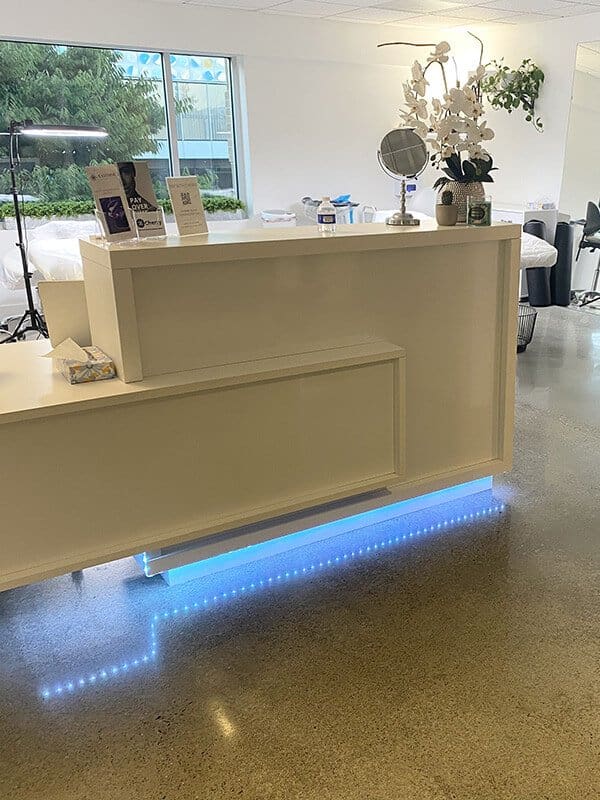Imagine you’ve just gotten your eyebrows microbladed, expecting to wake up each day to perfectly shaped brows, but instead, you notice unusual redness and swelling that doesn’t seem to subside.
You’re not alone in this experience, and it’s crucial to recognize the signs of poor microblading healing early on. From excessive scabbing or flaking to a loss of pigment uniformity, these symptoms can indicate that your skin isn’t responding well to the procedure.
Furthermore, signs of infection and prolonged healing times are red flags that shouldn’t be ignored. Understanding these indicators can help you take swift action, potentially saving your brows and skin from long-term damage.
Let’s explore what these signs really mean for the health of your microbladed brows and how you can address them effectively.
Key Takeaways
- Unusual redness or swelling around the microblading area can indicate an adverse reaction or infection.
- Excessive scabbing or flaking is not typical and may indicate skin under stress.
- Loss of pigment uniformity, such as uneven color distribution across the brow area, is a common sign of poor healing.
- Signs of infection, including worsening redness or swelling, pain, pus or unusual discharge, and fever, should be addressed promptly.
Unusual Redness or Swelling
If you notice persistent redness or swelling around your microblading area, it’s crucial to address these symptoms as they can indicate an adverse reaction or infection. While some redness and swelling are normal immediately after the procedure, these should subside within a few days. If they don’t, or if you notice an increase in these symptoms, it’s a sign that something isn’t right.
You’re encouraged to closely monitor the healing process, paying special attention to any changes in the skin surrounding your microbladed eyebrows. Unusual redness or swelling could stem from a variety of issues, including an allergic reaction to the pigments used, improper aftercare, or even the technique of the microblading itself. It’s essential to differentiate between normal healing processes and signs of complications.
Promptly consulting with a healthcare professional or your microblading technician can prevent further complications. They can offer guidance on whether you need medical treatment or if there are specific steps you should take to alleviate the symptoms. Remember, your health and safety should always be the top priority.
Excessive Scabbing or Flaking
Excessive scabbing or flaking often indicates that your skin is reacting more intensely to the microblading procedure than typical, necessitating careful attention and proper aftercare. While some scabbing is normal, as it’s part of the body’s natural healing process, an excessive amount can signal that your skin is under stress. This could stem from a variety of factors, including an aggressive technique used during the procedure, your skin’s sensitivity, or inadequate aftercare.
It’s crucial to resist the urge to pick or scratch at the scabs, as this can lead to scarring or infection, ultimately affecting the outcome of your microblading. Instead, keep the area clean and moist according to the aftercare instructions provided by your technician. They might recommend using a specific ointment to aid in the healing process and to keep the skin hydrated.
If you’re concerned about the level of scabbing or flaking, don’t hesitate to reach out to your microblading professional. They can offer guidance, assess if your healing process is on track, and provide recommendations to ensure the best possible outcome for your brows. Remember, proper aftercare is key to achieving the desired results while minimizing complications.
Loss of Pigment Uniformity
Often, individuals undergoing microblading notice a loss of pigment uniformity as a common sign that the healing process mightn’t be proceeding as expected. This occurrence manifests as uneven color distribution across the brow area, where some patches may appear significantly lighter or darker than others. It’s crucial to understand that while some degree of fading is normal due to the skin’s natural healing cycle, stark contrasts in coloration could indicate improper technique, poor aftercare, or your skin’s unique reaction to the pigment.
To address this issue, it’s essential to follow your technician’s aftercare instructions meticulously. Keeping the area clean and moisturized can promote even healing and pigment retention. However, if you’ve adhered to these guidelines and still notice considerable unevenness after the initial healing period, it may be necessary to consult with your microblading technician.
A touch-up session is often required to correct any irregularities in pigment distribution and achieve a more uniform appearance.
Touch-Up Schedule for Bellevue Microblading
Signs of Infection
While addressing pigment uniformity is crucial, it’s equally important to be vigilant for signs of infection, a serious concern that can arise during the microblading healing process. Infections can’t only jeopardize your results but also pose significant health risks. Recognizing these signs early can be key to preventing complications.
Firstly, if you notice any unusual redness or swelling that persists or worsens beyond the initial few days post-procedure, it’s a red flag. While some swelling is normal, an infection may be present if these symptoms escalate rather than improve.
Secondly, be on the lookout for unexpected pain or tenderness in the treated area. While discomfort is common immediately after microblading, pain that intensifies or persists indicates something isn’t right.
Another critical sign is the presence of pus or an unusual discharge. This is a clear indicator of infection and requires immediate attention.
Lastly, a fever or feeling unwell in the days following your microblading session can also signify an infection, as your body tries to fight off harmful bacteria.
If you observe any of these signs, it’s imperative to seek professional medical advice promptly to address the infection and mitigate any potential damage to your microbladed brows.
Prolonged Healing Time
A prolonged healing time, extending beyond the typical two to four-week period, may indicate complications in the microblading recovery process. When you’re dedicated to serving others, understanding these nuances becomes crucial to providing top-notch care and guidance.
If the healing process drags on without clear signs of improvement, it’s essential to recognize the potential underlying issues that may be at play. Here are some factors that could contribute to a delayed recovery:
- Persistent Redness or Swelling: While some redness and swelling are normal initially, their persistence can be a red flag.
- Increased Sensitivity or Pain: If the treated area remains unusually sensitive or painful to touch beyond the expected healing timeline, it might signal an issue.
- Scabbing or Flaking that Persists: Scabbing should gradually improve, not linger or worsen.
- Lack of Visible Healing Progress: The absence of noticeable healing progress over time is concerning.
In such cases, it’s imperative to seek professional advice. A specialist can assess the situation accurately and recommend the necessary steps to ensure a safe and effective healing process.
Your role in observing and responding to these signs can make a significant difference in the recovery journey of those you’re helping.
Conclusion
In conclusion, if you’re noticing unusual redness, excessive scabbing, or any signs of infection post-microblading, it’s crucial to seek professional advice.
Interestingly, a study revealed that up to 10% of microblading cases experience some form of healing complications. This statistic underscores the importance of selecting a reputable technician and following aftercare instructions meticulously.
Remember, while some pigment loss and flaking are normal, prolonged healing or discomfort are signs that your microblading mightn’t be healing properly.
Stay informed and proactive in your aftercare to ensure the best results.



